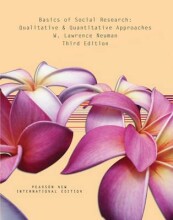Summary: Mind And Brain: Introduction To Cognitive Neuroscience
- This + 400k other summaries
- A unique study and practice tool
- Never study anything twice again
- Get the grades you hope for
- 100% sure, 100% understanding
Read the summary and the most important questions on Mind and Brain: Introduction to Cognitive Neuroscience
-
Lecture 1
This is a preview. There are 10 more flashcards available for chapter 03/02/2021
Show more cards here -
What are the three mental states?
Conscious experiences, cognition and emotions. -
What are the two types of substances?
- Res cogitans: the thinking substance
- Res extensas: the physical or extended substance
- Res cogitans: the thinking substance
-
What is Descartes' first method?
Radical doubt -
What is Descartes' second method?
Clear & distinct insights. -
How did Descartes get rid of the evil demon?
By accepting the existance and goodness of God to be true. -
Why do we also have a body and are we a physical substance?
Because god does not deceive me. -
What is the interaction problem?
Descartes not being able to explain how the mental substance and the physical substance interact, because every physical event has a physical cause and mental causes seem to be unintelligible. -
What is the conceptional incoherence in the concept of dualism?
The fact that our body, aphysical thing, would ''push '' the mind/is thecause of something that is happening in the mind. -
Lecture 2
This is a preview. There are 15 more flashcards available for chapter 10/02/2021
Show more cards here -
What is George Berkeley's solution to the interaction problem?
There is nointeraction , there is only the mind and there is no material substance. -
How does Berkeley argue?
Empricism, knowledge stems from experience through observation. You can't see the physical substance, but we see the secondary properties.
- Higher grades + faster learning
- Never study anything twice
- 100% sure, 100% understanding
































